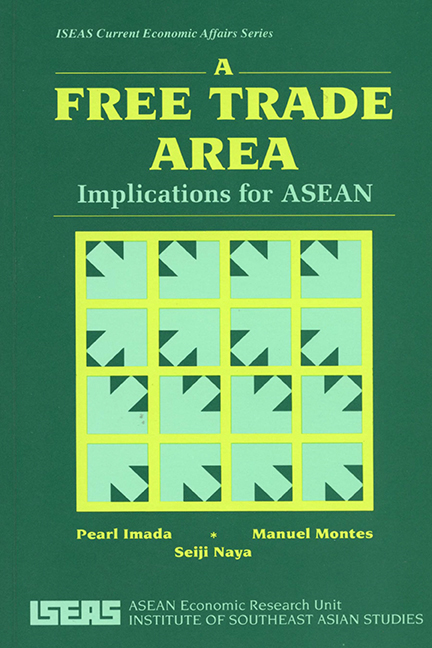Book contents
2 - An ASEAN Free Trade Area: Will It Be Economically Feasible?
Published online by Cambridge University Press: 21 October 2015
Summary
Why do countries form free trade areas? Economic theory shows that reducing tariffs multilaterally is almost always superior to preferential reductions in terms of world and member countries' welfare, and yet the tendency to form trading blocs has increased rather than slowed in recent years. It is not enough to look at the benefits from trade creation and the losses from trade diversion, important though these may be. It is also necessary to look at the benefits of reduced trade barriers which come from increased efficiency, gains from achieving economies of scale, and dynamic effects accrued from increased competition, learning by doing, and so on, all of which are difficult to measure. Additionally, a “collective good” argument has often been used to explain why governments have continued to lean towards free trade areas and customs unions despite the costs involved. The countries forming the union are more concerned with growth of exports and real output, industrialization being a major national goal.
Static Gains and Costs
Static effects of integration as emphasized in traditional theory generally argue that developing countries in particular have little to gain at best, and at worst may be harmed by economic integration. It is important to look at some of these indicators to ascertain a priori the possible net effect of integration on ASEAN. Six indicators will be briefly discussed in this section: (1) the size of the union and the initial share of trade conducted within the union; (2) the level and dispersion of tariff levels; (3) the initial level of development; (4) the commodity structure of trade in the region; (5) the potential for intraindustry trade; and (6) transport costs and other natural barriers.
Pre-integration Intra-regional Trade Levels
Economic theory suggests that the larger the economic area of the preferential arrangement and the more countries included, the greater the scope for trade creation. The scope for trade diversion will also be lower since it will be more likely that the lowest-cost producer will be within the union.
- Type
- Chapter
- Information
- A Free Trade AreaImplications for ASEAN, pp. 3 - 15Publisher: ISEAS–Yusof Ishak InstitutePrint publication year: 1991



